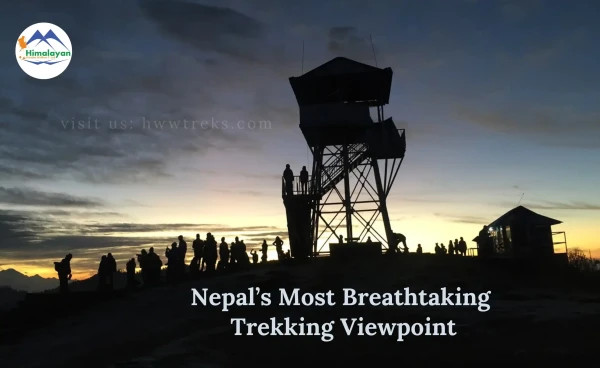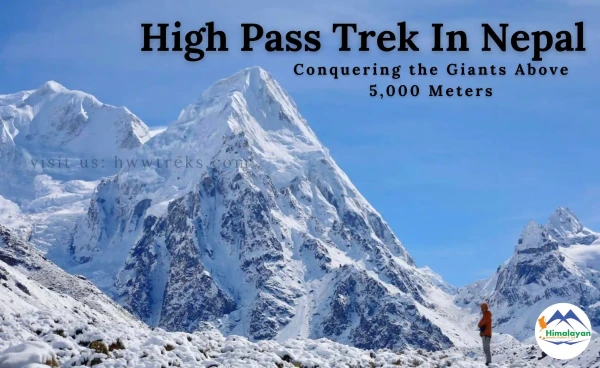- 09/26/2025
- Tags: Gaurishankar Trek
- Himalayan Wander Walkers
Rolwaling and Lapche valley
Trekking through the Gaurishankar conservation area is all about the heavenly high valleys such as Rolwaling and Lapche, the majestic Mount Gaurishankar, the isolated Tsho Rolpa Lake, Sherpa culture, the variety of geographical landscapes, adventurous activities such as mountaineering, and trekking over the high pass of Tashi Lapcha. The mystical power of this region has lured all the pilgrims, curious trekkers, mountaineers, and spiritual seekers. This region is a sacred place for Tibetan Buddhist devotees, especially those who are from the Kagyupa school of Tibetan Buddhism. Many foreigners from Asia as well as Western Europe visit this area by trekking from Lamabagar to Lapche Valley for pilgrimage. The Lapche Gompa area is recently getting more popular among retreaters. Even Hindu devotees visit Gaurishankar to pay homage to Lord Shiva and Parvati.
Trekking in the Rolwaling region of the Gaurishankar Conservation Area offers an unspoiled, less visited, more authentic Himalayan experience. Gaurishankar, a sacred peak guarding the Tibetan border, kept all the secrets by hiding the treasures of Lapche and Rolwaling Valley. The route covers the common hilly area to the most strenuous part of the Himalayas, dotted by high vantage points where the trekkers get relief after the hard climb to witness the jaw-dropping views. Not many visitors have reached here, and the valley is waiting to be discovered by adventurous trekkers and explorers.
Contents [hide]
- How to reach Rolwaling and Lapche of Gaurishankar?
- Permits and Entrance feee for Rolwaling and Lapche Trek
- How much does it cost for trekking permits in the Rolwaling region of the Gaurishankar area?
- How to get Permits for Rolwaling Trek?
- Different places to visit in Rolwaling Gaurishankar, Dolakha
- Treks in Rolwaling/ Gaurishangkar Region
- Trekking Peaks of Rolwaling, Gaurishankar Region
- Trekking Routes and Itineraries of Rolwaling Region of Gaurishankar
- Variations of Treks of Rolwaling Region
- How much does the Rolwaling trek cost?
- Camping trek in Rolwaling area
- Tea house Trek in Rolwaling
- Best time to Trek in Rolwaling valley
- Top Tips for Rolwaling Trekking
- Rolwaling, Gaurishankar area Map
- Lapchi Trek Itinerary PDF
- Conclusion
- Reviews of Trekking to Lapchi valley
How to reach Rolwaling and Lapche of Gaurishankar?

Rolwaling/Garurishankar lies in the north-central part of Nepal in the Dolakha district of Bagmati Province, where the Helambhu and Khumbu regions are neighboring on the west and east of it, respectively. Charikot Bazar is the ideal town to start all the treks within the Gaurishankar conservation area. If you are starting your journey from Kathmandu, then you can take a private vehicle, or you can drive by local buses, which are available from Ratnapark Bus Station. In the past, everyone used to start their trek right from Charikot, but nowadays, off-road facilities have reduced the trekking duration. Currently, the road has reached Lamabagar, where the Tama Koshi hydropower is based. If you are trekking toward Rolwaling Valley or Tashi Lapcha Pass, then Chhetchhet is your trekking start point, and the Lapche Valley trek starts from Lama Bagar, which is half an hour's drive from Chhetchhet. Recently, Chhetchhet and Lama Bagar have been the most popular trekking entry and exit points because of the new road construction.
Road condition of Rolwaling Gaurishankar Trek
The road connection from Kathmandu reaches the furthest to Lama Bagar village. Trekkers trekking to Bigu Gompa can drive to the Sotang River as the last drivable point. Those who are heading to Tashi Lapcha and Rolwaling Valley can drive to Chhetchhet and start the trek from there. Currently, there is a new road construction project going above the old trekking trail. The under-construction road comes from Lumnang to Lama Bagar and vice versa. In between, the road is not yet fully connected, and trekkers and local people need to use the same old path.
Permits and Entrance feee for Rolwaling and Lapche Trek
Permits are mandatory to enter the Gaurishankar area of both Rolwaling and Lapche Valley for all purposes, whether you are visiting by air or land. To obtain restricted permits for Lapchi, at least two travelers are required. Restricted permits are issued from the Nepal Immigration Department through registered and authorized trekking agencies. If you are single and willing to visit Lapchi but not able to trek because of no permits. Please let us know; we can help you get done with your permits.
Many say that Rolwaling doesn’t need restricted trekking permits. Is it true?
Let me clarify it. For many trekkers, it is confusing which part of the Rolwaling area requires restricted permits. Local-level government divisions were made based on Article 56 of the Constitution of Nepal 2015, such as municipalities and district assemblies. Since that time, the Department of Immigration of Nepal has decided to bring changes to the royalties of the restricted areas.
Within the Gaurishankar conservation area, Bigu Rural Municipality (all areas of ward number 1) and Gaurishankar Rural Municipality (all areas of ward number 9) required restricted trekking permits. Lapche Valley lies inside Gaurishankar Rural Municipality, and Lama Bagar of Rolwaling lies inside Bigu Rural Municipality.
Trekking in Rolwaling requires the following permits:
| S.No | Trekking Areas | Permits |
| 1 | Lapche Valley Trek |
Lapche Restricted Permit Gaurishankar Conservation Permit |
| 2 | Tashi Lapcha Pass Trek |
Lapche Restricted Permit Gaurishankar Conservation Permit Sagarmatha National Park Pasang Lhamu Rural Municipality Fee |
| 3 | Bigu Gompa Trek |
Gaurishankar Conservation Permit |
| 4 | Trek within Rolwaling Circuit |
Gaurishankar Conservation Permit |
How much does it cost for trekking permits in the Rolwaling region of the Gaurishankar area?
Permit costs for the conservation area are normally paid in Nepali rupees, and restricted permits' royalties are charged in US dollars.
1. Gaurishankar Conservation Area Permit (GCAP) cost NPR 3000 per person for one time single entry
2. Special Permit for Rolwaling and Lapchi cost USD 20 per person per week
3. Sagarmatha National Park costs NPR 3000 per person for a one-time single entry.
4. Khumbu Rural Municipality costs NPR 2000 per person for a one-time single entry.
How to get Permits for Rolwaling Trek?
Trekking in Lapchi is the same as in other restricted areas of Nepal, where you are not allowed to visit the places individually. You need a local trekking agency to prepare your permits and guides and even organize your whole trip.
The Gaurishankar Conservation Area (GCAP) entry ticket is issued by the Department of National Parks and Wildlife Conservation located within the Nepal Tourism Board office building at Brikutimandap in Kathmandu. It is also available during your visit at the entry point.
To obtain your permits for Rolwaling and Lapche, you need to email us the following documents at info@hwwtreks.com or hwwtreks@gmail.com
- A clean copy of your valid passport (if you already have a visa, then send a copy of your Nepal visa too)
- Copy of your visible passport-sized photo (taken within the last 6 months)
- International Flight Tickets of Nepal
- Copy of your travel Insurance
- Hotel Booking if you booked by yourself
Different places to visit in Rolwaling Gaurishankar, Dolakha
Rolwaling doesn’t mean only trekking and mountaineering things. There are many things to do other than trekking. Following are the reasons why you must visit this amazing region.
- Dolakha Bhimsen Temple
The Dolakha Bhimsen temple lies at Charikot Bazaar, to the east of Kathmandu by 133 km. The main temple is located just below the highway. It is one of the holiest Hindu temples in central Nepal. Inside this temple, you can find three main statues of Bhimsen, goddess Bhagawati, and Lord Shiva. There is a story that the passing porters found three stones that were floated by the Tama Koshi River and used them as a firepot for cooking their meals. It is believed that the sweating from the main statue of the temple shows a bad omen for the country. Because of some mystical evidence, thousands of pilgrims pay homage to the temple, and locals perform puja every Tuesday and Saturday. - Kalinchowk, Kuri
Kalinchowk has been a popular and trending place for quite some time. It is the best place to witness snowfall and to have a great snow experience near Kathmandu. Many weekenders go there to enjoy the snowfall and explore the place during the winter season. Kalinchowk is the name of the temple (Kalinchowk Bhagwati Temple), located at the top of the hill at an altitude of 3842 m. It is about 150 km away from Kathmandu. Before, it was a challenge to reach Kalinchowk, but recently a cable car has been added to help with the growing number of visitors, which made it so easy for travelers. One can go by private vehicles or local buses. Read our Kalinchowk Travel Blog. - Sailung
Sailung Hills is one of the best places to visit in the Dolakha district. This mind-blowing place attracts every traveler who pays a visit there. This hill is located at a height of 3146 meters above sea level, and it is 118 kilometers away from Kathmandu. A perfect vacation spot for a day hike and picnic. On the backdrop of these hundreds of hills lies a panoramic view of the Himalayas. There is a popular Nepali song called “Mathi Mathi Sailungi Ma.” - Jiri
Jiri is also called the Switzerland of Nepal. It is 185 kilometers away from the capital city, Kathmandu, which takes approximately eight hours by bus. It was the first trekking route that led to the Everest Region when there was no airport at Lukla. Jiri is a perfect place for cattle grazing, and you will see the beautiful hills with the green pasture. There is an agricultural development center, which is looked over by the Swiss government. Locals get training and employment opportunities from this center. Jiri is also known for organic agricultural products. You can find cheese factories, cattle-rearing farms, kiwi farms, and other crops. In Jiri, there is a memorial park for Tenzin Norgay and Edmund Hillary. For visitors, there are homestays to stay overnight during their visit. The hospitality of Jirels welcomes all visitors from within and outside the nation. - Lapche Gompa (Chora Ghephelling Monastery)
Lapche Gompa is originally named Chore Ghephel Ling Monastery. This monastery belongs to the Drigung Kagyupa sect of Tibetan Buddhism. The main monastery is enclosed by the wall in a squared area. There are several rooms for monks’ dormitories as well as for guests who come to visit Lapche Valley. This monastery is surrounded by three snowy peaks named Chenresig, Chagna Dorjee, and Jampeyang, which represent the guardians of the monastery. The construction of this monastery represents the mandala of Tara. That is why monks do not need to create mandalas during Tara Puja. Above the monastery, there are retreat caves where Sage Milarepa meditated in the upper cave. - Bigu Gompa
Bigu Gompa was founded in 1934 AD by a respected monk from Bhutan with the help of a local sherpa named Nima Pasang. The real name of the Bigu monastery is Tashi Chime Gatsel. This monastery is home to 60-65 nuns. Locals also call it Ani (nun) Gompa. Nuns here practice and follow the Drigung Kagyu sect of Tibetan Buddhism. Bigu village was the epicenter of the 2015 earthquake. It was destroyed and restored in 2017 with the help of local and foreign NGOs. A must-not-miss place in the Gaurishankar area. - Tamakoshi Hydropower Project
Tamakoshi hydropower’s dam lies in Lama Bagar, and the ground powerhouse is next to Gongar Khola of Dolakha district. This hydropower project was started in 2011 and completed in 2021. Recently, Nepal’s Prime Minister KP Oli Sharma inaugurated this project on 5th July 2021. The Tamakoshi Hydroelectric Project is a 456 MW peaking run-of-the-river hydroelectric project in Nepal. It is the largest hydroelectric project in Nepal and the nation's highest-priority project. - Gaurishankar Himal
Gaurishankar (7134 m) is a mountain that lies near the west of Rolwaling Himal. Sherpa people called it Jomo Tseringma in the Tibetan language. It is the second-highest peak of the Gaurishankar area. Gauri is the Hindu goddess manifestation of Parvati, Lord Shiva’s beloved wife. So, Hindu devotees pay homage to Gaurishankar. This mighty mountain is visible even from Kathmandu, and it is approximately 100 kilometers away from Kathmandu city. - Tsho Rolpa Lake
Tsho Rolpa is a glacial lake located at a height of 4580 meters, one of the biggest lakes in Nepal. It is one of the most highlighted places on the Rolwaling Valley Trek in the Dolkha district. This lake has been getting bigger every year for the last fifty years because of global warming; glaciers are melting. The trekking route to Tsho Rolpa is fine and well-managed. In Tsho Rolpa, there is an early warning system installed that will alarm locals about the flood one hour before the flood reaches the village.
Treks in Rolwaling/ Gaurishangkar Region
1. Rolwaling Valley trek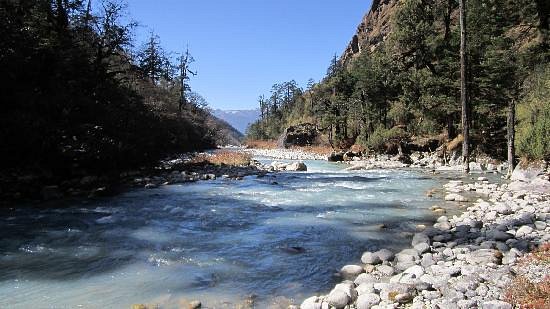
The Rolwaling Valley Trek is not well known but worthy of doing. Rolwaling Valley is tucked between two impressive mountain ranges, the Gaurishankar Himal and the Rolwaling Himal. The sensational mountain vistas and the Sherpa villages with Buddhist vibes are the main highlights of this trek. The Rolwaling Trek will make your trip exciting. This trek is perfect for those who don’t like to climb high passes during the trek. The only drawback of this trek is you have to retrace the same route down to Chhetchhet.
Facts of Rolwaling Valley Trek
- Difficulty: Easy-moderate
- Trek Duration: 10 Days from Kathmandu to Kathmandu.
- Max. Elevation: 3,730 m
- Permits: Gaurishankar Conservation Area
- Accommodation: camping, basic tea houses.
- Start/End Point: Chhetchhet
See Details of Rolwaling Valley Trek.
2. Bigu Gompa Trek
The Bigu Gompa Trek lies to the west of the Lapche and Rolwaling valleys that lie within the Gaurishankar Conservation Area (GCAP). It is an alternative trek to the Rolwaling trek. In the past, this trek needed almost 10 days to complete. These days you can do this trek in a very short time—within a week. This trek is suitable for those who want to experience a very less traveled area, and one can add this trek to the Rolwaling trek if there is available time to do both at the same time. The most interesting attraction of Bigu Gompa is the nuns. When you trek in the Himalayas of Nepal, you might have seen monasteries with monks in most of the regions, but here you will witness a nunnery. Trekkers love to explore the daily lives of nuns who stay there for 12 months of the year.
Facts of Bigu Gompa Trek
- Difficulty: Moderate - Herd
- Trek Duration: 6 Days
- Max. Elevation: 3317 m
- Permits: Gaurishankar conservation permits
- Accommodation: camping, basic homestays.
- Start Point: Sarang Khola
- End Point: Barabise
See Details of the Bigu Gompa Trek.
3. Lapche Valley Trek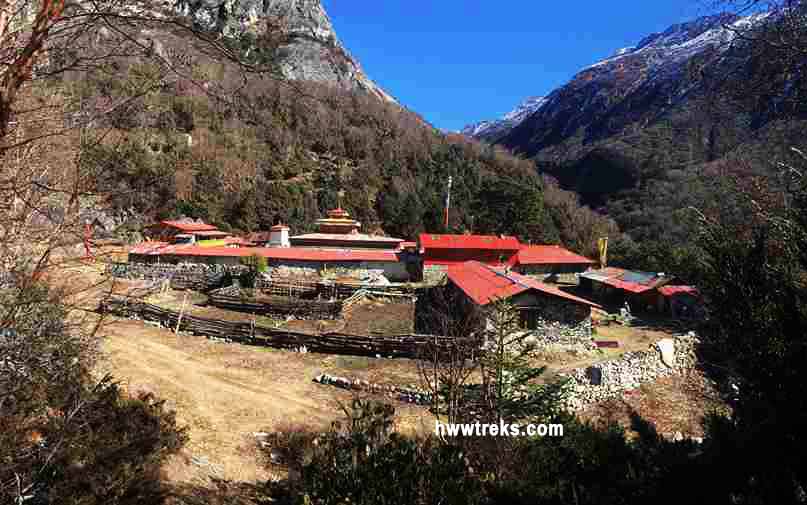
The Lapchi Valley Trek is one of the most desirable trekking routes in the Himalayas of Nepal, which is recommended by all travelers who have visited there. Lapchi, or Lapche, is a paramount spiritual mountain that is known as Milarepa’s hermitage. It is located in Rolwaling in the eastern part of Nepal at a height of about 4850 meters along the border of Nepal and Tibet. This trek offers an opportunity to discover the least visited, remote, and exciting secret corners of Nepal. Lapchi Trek and the Lapchi area are the sacred destinations in the Himalayas after Kailash and Tsari.
Facts of Lapche Valley Trek
- 1. Difficulty: Moderate-Strenuous
- Trek Duration: 8 Days.
- Max. Elevation: 4600 m
- Permits: Dolakha Restricted Permit and Gaurishankar Conservation
- Accommodation: camping, basic homestays.
- Start/End Point: Lama Bagar
See details of the Lapche Valley Trek.
4. Tsho Rolpa Trek 
Tsho Rolpa is a lake in the Rolwaling region of the Gaurishankar conservation area, which is located at a height of 4600 m and 4.5 km away from Na village. The lake is formed from the melting glacier. In Tibetan, Tsho means lake, and the name "Rolpa came from Rolwaling. Literally, Tsho Rolpa means lake situated in Rolwaling. The trekking route to Tsho Rolpa and Rolwaling is the same, as both treks lead to Tsho Rolpa, the last point of the whole trek. Although there are two different names, the trek is 100 percent the same. Previously, the Rolwaling trek was popular, and later on in 2016, the flow of domestic tourists grew, and many youths reached different trekking areas of Nepal. Some made videos and blogs, and the bloggers used Tsho Rolpa as their title. So, the trek name became Tsho Rolpa.
Facts of Tsho Rolpa Trek
- Difficulty: Easy-moderate
- Trek Duration: 3 days to the lakes. 5-7 days return.
- Max. Elevation: 3,730m
- Permits: Gaurishankar Conservation Permit
- Accommodation: camping, basic homestays.
- Start/End Point: Chhetchhet
7 Days Tsho Rolpa Trek Outline Itinerary
Day 1: Drive from Kathmandu to Chechet and Trek to Simigaun (2,019 m)
Day 2: Simigau (2019 m) To Dongang (2800 m)
Day 3: Dongang (2800 m) to Beding Village (3690 m)
Day 4: Naa Village (4183 m)
Day 5: Naa Village (4183 m) to Tsho Rolpa Lake (4580 m) to Beding Village (3690 m)
Day 6: Beding Village to Gongar Khola
Day 7: Gongar Khola to Kathmandu
See Details of the Tsho Rolpa Trek.
Trekking Peaks of Rolwaling, Gaurishankar Region
Rolwaling Valley offers an opportunity for mountaineers who want to experience some difficult and challenging climbing routes. Shipton was the first person who explored the upper Rolwaling area in 1951. But at that time, no one had climbed peaks in this area. After a year of Shipton’s visit, W.H. Murray’s team summited Ramdung Go peak in 1952. There are a number of peaks that are alluring to many serious mountaineers. This region of the Gaurishankar area doesn’t lack fine mountain vistas.
1. Ramdung and Yalung Ri Peak Climbing
Ramdung and Yalung Ri lie on the same routes that lie south of Na village in the Upper Rolwaling valley. Ramdung Go (5925 m) is a trekking peak that offers a stunning panoramic view of mountain ranges from Everest to Langtang and also a splendid view of Gauri Sankar and Menlungtse. Ramdung Peak requires technical support somehow, depending on the snow level and condition of the route, whereas Yalung Ri is more like a La pass, which doesn’t need that much technical support. The best season to climb the Ramdung Go peak is from early October to late November.
Facts of Ramdung Peak Climbing
- Start Point: Chhetchhet (1377 m)
- Finish Point: Chhetchhet (1377 m)
- Distance: 85-95 km Approximately
- Time Duration: Min 17-Max 20 Days
- Max Altitude: 5953 ft (Ramdung Go)
- Trekking Style: Camping during climb and rest with lodges
- Transportation: Jeep and Bus
2. Parchamo Peak climbing
Perchamo Peak climbing can be done in two ways. One from the Khumbu region and another from the Rolwaling region. Those who are doing it from Dolakha need to cross Tashi Lapcha Pass (5755 m). The route of the Tashi Lapcha Pass trek and the Parchamo Peak Expedition is the same; the only thing is that you need two extra days for acclimatization and to summit Parchamo (6,187 m). It required several technical skills. The view from the summit is rewarded with breathtaking vistas of the Amadablam Expedition, Thamserku, Kusum Kanguru, Cho Oyu, and other surrounding mountains. After the summit, the route links with Khumbu, the Everest region, and finally ends the trip at Lukla.
Facts of Parchamo Peak Climbing
- Start Point: Chhetchhet (1377m)
- Finish Point: Lukla (2840m)
- Distance: 90-100 km Approximately
- Time Duration: Min 17-Max 19 Days
- Max Altitude: 6,187 meters / 20,298 ft (Perchamo)
- Trekking Style: Camping during climb and rest with lodges
- Transportation: Jeep, Bus and Flights
Trekking Routes and Itineraries of Rolwaling Region of Gaurishankar
The trekking routes in Rolwaling are mostly similar except for the Lapche Valley trek route. Please check the itinerary of different treks in the Gaurishankar area.
1. Rolwaling Valley Trek Itinerary (9 Days from Kathmandu to Kathmandu)
Day 01: Drive to Jagat (1150 m) from Kathmandu
Day 02: Trek to Simigaun (2020 m), 4-5 hours walk.
Day 03: Trek to Dongang (2790 m), 6.5 hours.
Day 04: Trek to Bedding (3700 m), 6 hours.
Day 05: Acclimatization Day in Bedding (3700 m).
Day 06: Trek to Na (4200 m), 5-6 hrs
Day 07: Side Trek to Tso Rolpa (4500 m), 6-7 hour walk.
Day 08: Trek to Dongang (2790 m), 6 hours.
Day 09: Trek to Gongar Khola (1430m), 5.5 hours.
Day 10: Drive to Kathmandu
2. Bigu Gompa Trek Itinerary (6 Days from Kathmandu to Kathmandu)
Day 01: Drive to Sarang Khola (1300 m) from Kathmandu
Day 02: Sarang Khola - Bigu Gompa (2450 m) 6 hours of walk
Day 03: Bigu Gompa - Tingsang La (3300 m) 5 hours of walking and O/N in a hotel.
Day 04: Exploration Day
Day 05: Trek to Dolangsa Village (2600 m) via the small pass of Tingsang La (3300 m).
Day 06: Trek to Barabise & drive to Kathmandu
3. Lapche Valley Trek Itinerary (8 Days from Kathmandu to Kathmandu)
Day 1: Kathmandu-Lamabagar (2077m)
Day 2: Lamabagar-Lunang Village (2900 m)
Day 3: Lumnang to Lapchi Village (3030 m)
Day 4: Hike to Sephuk (4600m)
Day 5: Ramding Namgoma
Day 6: Lapchi Gonpa to Lumnang (Retrace)
Day 7: Lumnang to Lamabagar (Retrace)
Day 8: Lamabagar to Kathmandu Ktm (Final Day of a trip)
4. Tashi Lapcha Pass Trek Itinerary (15 Days from Kathmandu to Kathmandu)
Day 01: Drive from Kathmandu to Chhetchhet (1377m), 8-10 hrs
Day 02: Chhechhet to Simi Gaon (2100m), 3 hours
Day 03: Simigaon-Dongang (2800 m/9,185 ft), 5-6 hrs.
Day 04: Dongang - Beding (3690m/12,105ft), 5-6 hrs
Day 05: Beding Rest and Acclimatization Day: Malung Kharka Hike, 5-6 hrs.
Day 06: Beding - Na: (4185m/13,750ft), 5-6 hrs
Day 07: Na: Rest and acclimatization day—Yalung La hike, 4-5 hrs
Day 08: Na village to Nyiduk Kongma (4750m/15,582), 5-6 hrs
Day 09: Nyiduk Kongma - Drolumbau Glacier (5205m/17,075), 5-6 hrs
Day 10: Drolumbau Glacier - Teshi Laptsa pass (5755m/18,820ft) and decent to Camp at (5460m/17,912ft), 6 -7 hrs
Day 11: Camp Thame (3805m/12,482), 5-6 hrs
Day 12: Thame-Khumjung (3871m/12,700ft), 3-4 hrs
Day 13: Khumjung - Monjo (2840m/9,318), 3-4 hrs
Day 14: Monjo - Lukla (2840m/9,317ft), 4–5 hrs
Day 15: Lukla-Kathmandu (1350m/8,405ft), 35min flight.
5. Ramdung and Yalun Peak Climbing Itinerary (16 Days from Kathmandu to Kathmandu)
Day 01: Drive from Kathmandu to Chhetchhet (1377m), 8-10 hrs
Day 02: Chhechhet to Simi Gaon (2100m), 3 hrs
Day 03: Simi Gaon to Donggang (2791m), 5-6 hrs
Day 04: Donggang to Beding (3740m), 6-7 hrs
Day 05: Explore Bedding
Day 06: Bedding to Na (4180m)
Day 07: Na village
Day 08: Na village
Day 09: Na Village
Day 10: Na to Yalung Base Camp (4800m), 5-6 hrs
Day 11: Yalung base Camp to High Camp (5300m), 4-5 hrs
Day 12: High Camp to summit (5930m) and Return to High Camp, 7-9 hrs
Day 13: High Camp to Na Village (4180m), 7-8 hrs
Day 14: Na to Kyalche (2810m), 7 hours.
Day 15: Trek Kyalche to Chhetchhet (1377 m), 4 hours.
Day 16: Drive to Kathmandu (1300m)
6. Rolwaling Baramji Ridge Trek Itinerary (17 Days from Kathmandu to Kathmandu)
Day 01: Drive from Kathmandu to Chhetchhet (1377m), 8-10 hrs
Day 02: Chhechhet to Simi Gaon (2100m), 3 hrs
Day 03: Simi Gaon to Donggang (2791m), 5-6 hrs
Day 04: Donggang to Beding (3740m), 6-7 hrs
Day 05: Explore Bedding
Day 06: Bedding to Na (4180m)
Day 07: Na village
Day 08: Na village
Day 19: Na to Yalung Base Camp (4800m), 5-6 hrs
Day 10: Yalung Base Camp to Yalung Kharka (4800m), 7-8 hrs
Day 11: Yalung Kharka to Tosabun (4460m), 5-6 hrs
Day 12: Tosabun to Hanbu Kharka (4320m), 3-4 hrs
Day 13: Hanbu Kharka to Jatagoti Kharka (5050), 4-5 hrs
Day 14: Jatagoti Kharka to Baramji (4071m), 6-7 hrs
Day 15: Baramji to Chordung (3690m), 6-7 hrs
Day 16: Chordung to Jiri (1995m), 6-7 hrs
Day 17: Jiri to Kathmandu (1300m), 9-10 hrs
7. Tsho Rolpa Trek Itinerary (10 Days from Kathmandu to Kathmandu)
Day 01: Drive from Kathmandu to Chhetchhet (1377m), 8-10 hrs
Day 02: Chhechhet to Simi Gaon (2100m), 3 hrs
Day 03: Simi Gaon to Donggang (2791m), 5-6 hrs
Day 04: Donggang to Beding (3740m), 6-7 hrs
Day 05: Explore Bedding
Day 06: Bedding to Na (4180m)
Day 07: Na to Tsho Rolpa and return to Bedding (3740m), 5-6 hrs
Day 08: Bedding to Kyalche (2810 m), 5-6 hours.
Day 09: Trek Kyalche to Chhetchhet (1377 m), 4 hours.
Day 10: Drive to Kathmandu (1300m)
Variations of Treks of Rolwaling Region
Rolwaling is also one of the routes that connect the Great Himalaya Trail (GHT) route from east to west Nepal.
1. Tashi Lapcha Pass Trek to Khumbu Everest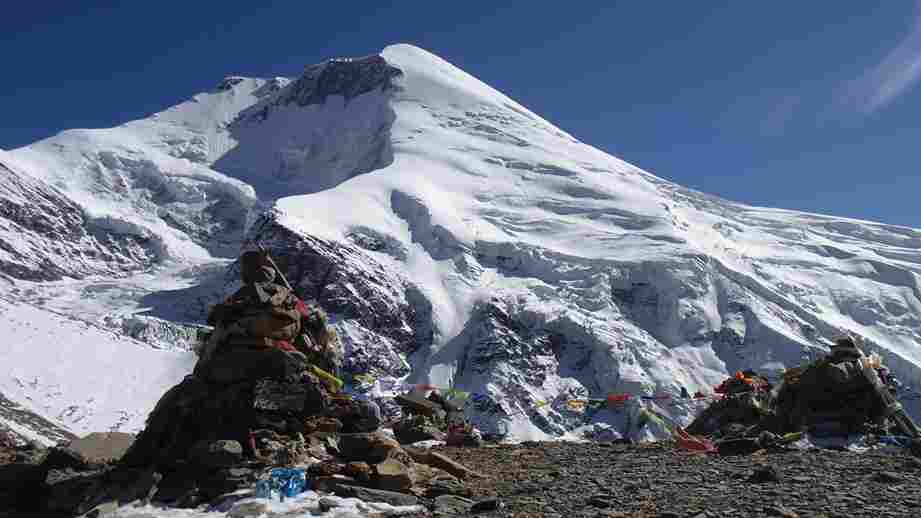
The Tashi Lapcha Pass trek is not only a trek; it is about mountaineering, which requires skill and climbing experience. It offers an outstanding view of the Himalayas that lie along the northeastern side that is linked with the Khumbu region. This trek is one of the most challenging treks in Nepal. The route starts from the Chhechhet of the Rolwaling area and then continues all the way to Tsho Rolpa Glacier Lake. After a couple of hikes through the glacier, you will reach the most demanding pass of this trek, Tashi Lapcha, at 5755 m. Now you are walking in the Khumbu Region of Sagarmatha National Park. This trek is a dream for many trekkers who want to witness and experience the high passes, isolated villages, glacier lakes, and altitude challenges.
2. Panch Pokhari Trek to Helambhu Region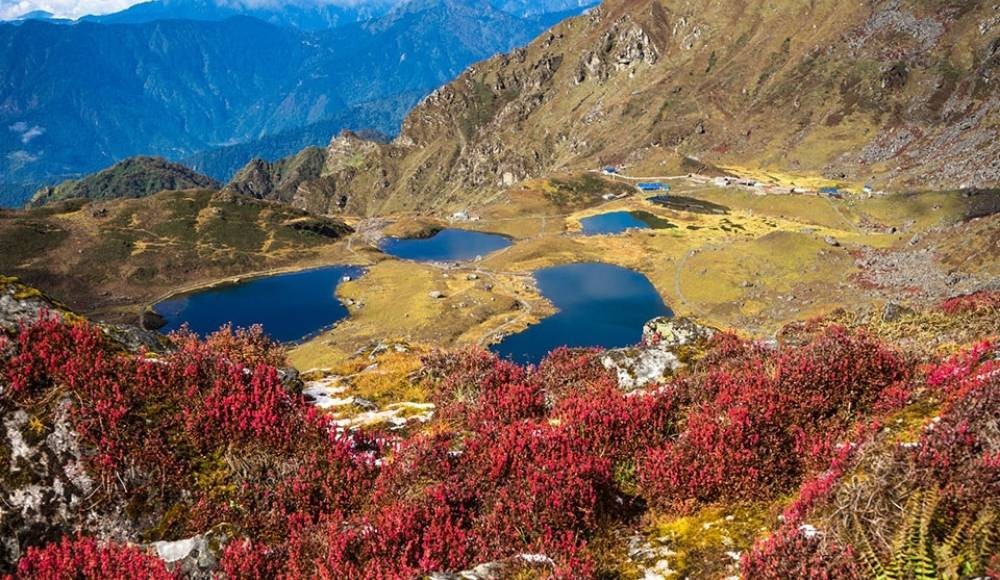
Panch Pokhari lies at a height of 4100 meters above sea level in the Sindupalchowk district, to the east of the Helambu region. This trek can be done based on a very basic teahouse trek where you will stay with a local family. From the Rolwaling Region, there is a Great Himalayan Trail that passes through the Bigu Gompa Trek routes until the last resort and then to Pach Pokhari. The itinerary from Chhetchhet or Shigati to Last Resort is the same as an itinerary of Bigu Gompa, and from Last Resort, it will take 4-5 days to reach Panch Pokhari.
How much does the Rolwaling trek cost?
The cost of trekking in Rolwaling depends on many aspects, like duration, facilities, means of transportation, crew members, number of trekkers in a group, etc. Trekking in the Gaurishankar area of the Rolwaling region is not more expensive than other regions of Nepal because 80 percent of the area is done in tea house treks, and in addition to that, restricted permits are cheaper. Some treks don’t require restricted permits. Check below in the table of cost breakdown for trekking in the Rolwaling and Lapche valleys of the Gaurishankar area.
|
S.No |
Permits and Services |
Cost in USD |
|
1 |
Local Bus (Two ways) approximately |
16 |
|
2 |
Gaurishankar Permit |
30 |
|
3 |
Dolakha Restricted Permit for a week |
20 |
|
4 |
Guide per day |
30-40 |
|
5 |
Camping cost with everything includes cost per person with minimum of two people in a group |
110 |
|
6 |
Tea House Room Per Night
|
5-10 |
|
7 |
Food per Day (3 times meal per day) Approximately |
25-35 |
|
8 |
Agency service fee for organizing per person |
10% of total cost per person |
Camping trek in Rolwaling area
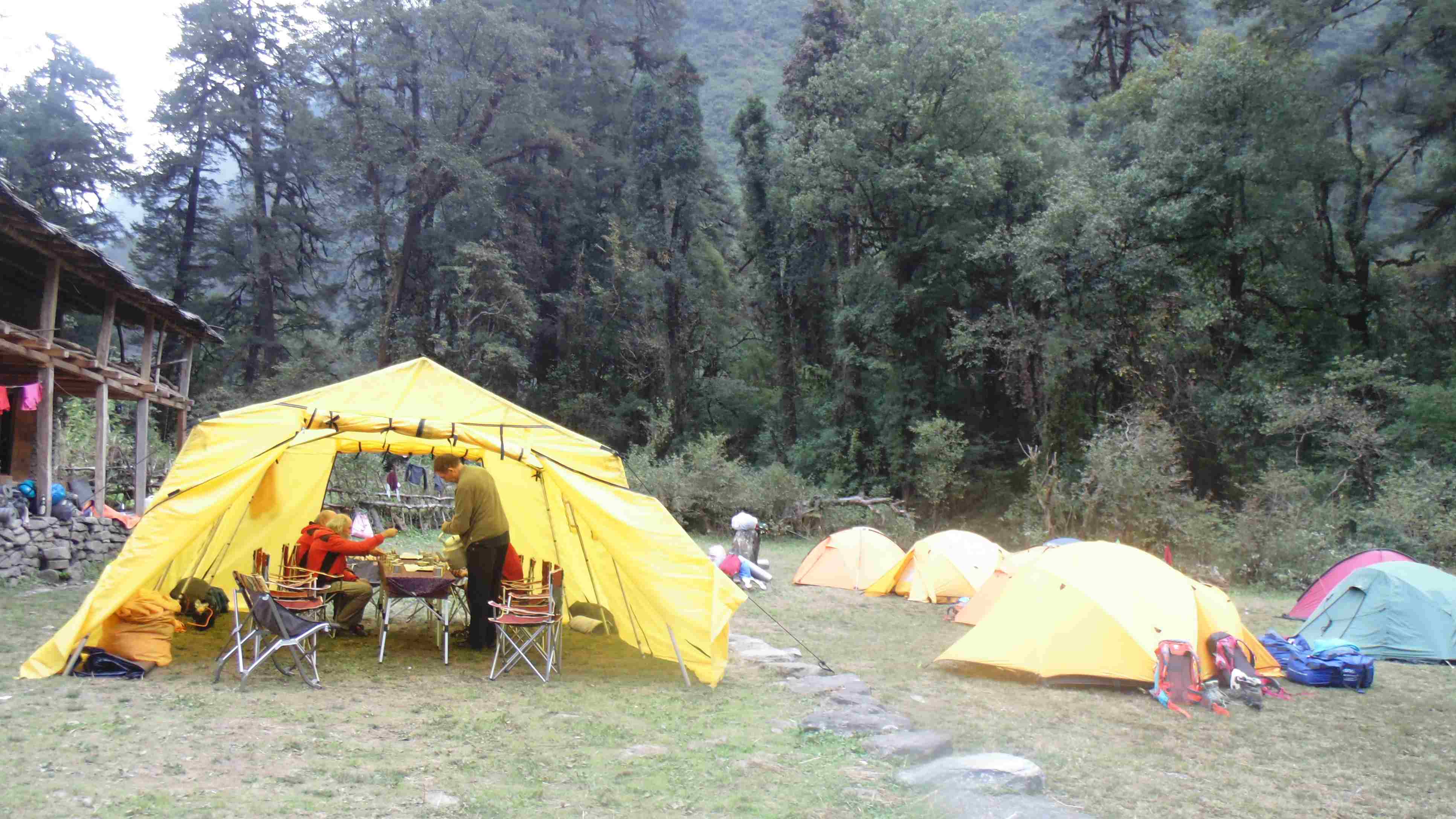
In the Rolwaling area, camping treks are recommended only for the Tashi Lapcha Pass Trek. The rest of the treks can be done based on teahouses. If you prefer better service for your treks in Rolwaling, such as quality food, soulful trips, and pure private trips,. Then camping treks are the best option, but they will be more expensive than teahouse treks, which require all camping trek supplies—camping equipment, kitchen implements, and food—to be carried by pack animals like mules, yaks, and horses. Even porters are common in Nepal. All trekkers are accompanied by a guide, a cook, and usually at least one horseman or yak herder.
Tea house Trek in Rolwaling
Teahouse treks in the Rolwaling region are getting popular due to the new road construction and good management of trekking trails. Decades ago, trekking was possible only with a full camping trek in the whole Gaurishankar area. These days, lodges and homestays are available in different villages. Like in Lapche Valley, you need to stay at Lapche Monastery if you are doing a teahouse trek. There is no food menu available; you need to eat what they provide at the monastery for monks. If you are planning to do a teahouse trek in Rolwaling and you think that the services are similar to Annapurna and Everest, then you are wrong. If you have experience trekking in Everest and are looking for a similar service, then Camping Trek is your choice.
Best time to Trek in Rolwaling valley

In general, trekking in Nepal is popular in the spring (mid-March, April, and May) and autumn (mid-September, October, and November). Trekking to Rolwaling in spring and autumn is the best time, as winter is too cold and in summer the routes are difficult due to the monsoon season.
Throughout the spring and autumn seasons in the Rolwaling area, the temperature will range from 15°C down to -10°C and colder at night.
The Lapche Valley is the only rain shadow area among all treks of the Gaurishankar Conservation Area. Even though the valley is beautiful in the summer season, very few people travel during the monsoon season due to the risky trails between Lama Bagar and Lumnang.
Top Tips for Rolwaling Trekking
- Whenever you are planning your trek to Rolwaling, never forget to check the weather forecast in advance and take a printout of the coming 10 days of weather forecasts with you. It will definitely be useful when there is no internet connection.
- It is normal to meet your porter in the teahouse, where you will stay overnight. So, pack your necessary things in your own daypack.
- The earlier you visit this hidden valley of Rolwaling and Lapche, the more rewarding the trip will be. Who knows whether the present tradition, lifestyle, culture, and its natural beauties remain the same as they are or not?
- Trekking in Rolwaling Valley and Bigu Gompa is easy, but if you are trekking to Lapche and Tashi Lapcha Pass, it isn’t easy. So, proper clothing and gear are essential.
- Staying healthy during your trekking days is key to the success of your trip. So, take more hot drinks and eat well.
- Acclimatization is necessary for trekking in the Gaurishankar area, especially in the Lapchi and Rolwaling valleys, as you are walking at a high altitude, mostly 4000 meters. Always be flexible with your itinerary and keep spare time for rest.
- Don’t forget to choose the right season to visit this Gaurishankar area.
- Choose a local trekking agency. Locals have a direct link with local people.
- You must have your own travel insurance that covers helicopter rescue because chartering a helicopter is the best and quickest way to rescue in the mountains.
- Don’t set off without your permits. If you are traveling without permits and the checkpoint officer notices you. Then you are compelled to pay the cost of permits and return to Kathmandu without fulfilling your dream trek.
- Take your passport and a copy of your insurance.
- Hire an experienced guide who has good knowledge of the region.
- Don’t forget to tip your crew members because they never ask for it directly. If you don’t have an idea how much to tip,. Normally tips are 10 to 15% of their wages.
Rolwaling, Gaurishankar area Map
View Map in New Tab for more clarity.

Lapchi Trek Itinerary PDF
Conclusion
Both the Rolwaling and Lapche valleys of the Gaurishankar Conservation Area (GCAP) are the perfect destinations for adventurers, climbers, pilgrims, philosophers, and dreamers. Climbing up and down is normal for trekking in Nepal. So, don’t think that you will trek like hiking in the Alps of European countries. Whatever the difficulties that you face during your trek, in the end, you will know the worth of seeing giant mountains in front of yourself and experiencing one of the most hospitable people in the world. The Gaurishankar Area is always blessed by Lord Shiva (Hindu) and the ancient Buddhist sage, Milarepa. So, visit this holy place and feel the mystical power.
Reviews of Trekking to Lapchi valley
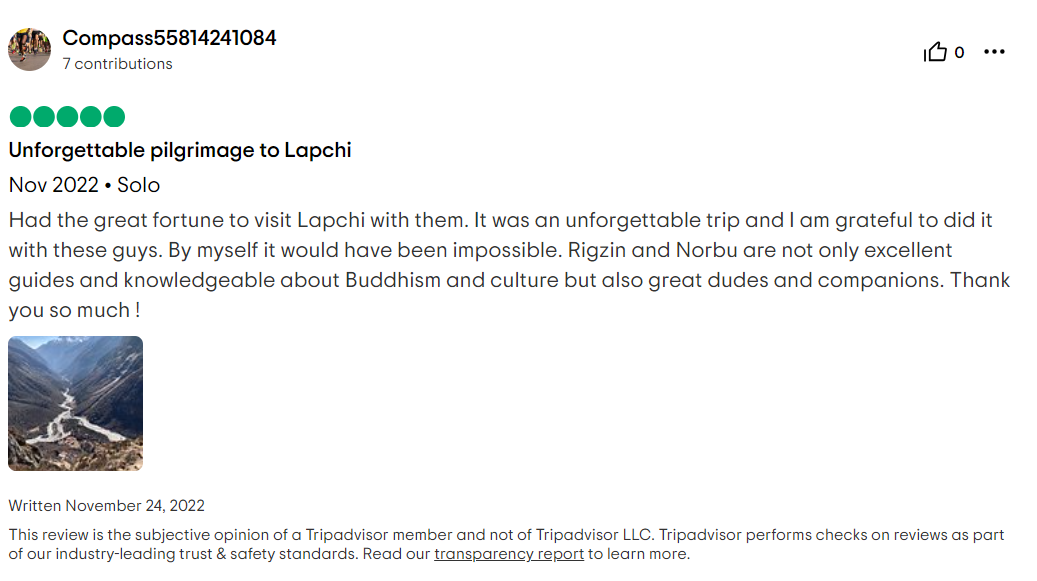
Unforgettable pilgrimage to Lapchi
Nov 2022 • Solo
Had the great fortune to visit Lapchi with them. It was an unforgettable trip, and I am grateful to have done it with these guys. By myself it would have been impossible. Rigzin and Norbu are not only excellent guides and knowledgeable about Buddhism and culture but also great dudes and companions. Thank you so much !
Frequently Asked Questions
Find answers to common questions about our services
The Rolwaling Valley trek is considered challenging and adventurous, requiring good physical fitness and mountain experience. This is an off-beat trekking destination due to its difficulty and closeness to the Himalayas. The trek involves altitudes up to 5,100+ meters with technical sections including the challenging Tashi Lapcha Pass at 5,755 meters. Prior high-altitude trekking experience and excellent physical condition are recommended for this demanding adventure.
Yes, a licensed guide is mandatory for the Rolwaling trek as per government regulations. The trek must be run by a registered trekking agency. Solo trekking is not permitted in this region. Guides are essential for navigation through technical sections, glacier crossings, weather assessment, and emergency situations. They also provide cultural insights into Sherpa communities in villages like Beding and Na, handle permits, and ensure proper acclimatization schedules in this remote and challenging terrain.
Accommodation in Rolwaling consists of basic teahouses and lodges in lower villages like Simigaon, Dongang, Beding, and Na. Finest possible double-split lodge to lodge accommodation throughout the hike is available, though facilities are basic due to the remote location. In higher elevations and technical sections, camping is required with tents, sleeping bags, and meals provided by trekking agencies. The accommodations offer authentic Sherpa cultural experiences while providing necessary rest in this pristine and less-visited valley.
Yes, Rolwaling region treks can be customized to meet your preferences and experience level. We can modify the standard 12-20 day itinerary to include additional acclimatization days, extend exploration time at Tsho Rolpa glacial lake, or combine it with the Tashi Lapcha Pass crossing to reach the Everest region. Whether you want to focus on cultural immersion in Sherpa villages, mountaineering training, or simply enjoy the Himalayan nature, we can tailor the experience while ensuring safety requirements for this technically challenging trek are met. "Customize Your Trip"
Rolwaling Tashi Lapcha Trek: 19 days comprehensive adventure crossing the challenging Tashi Lapcha Pass (5,755m) connecting Rolwaling with the Everest region.
Rolwaling Tsho Rolpa Lake Trek: 10-12-day trek focusing on the beautiful glacial lake surrounded by towering peaks and glaciers.
Lapchi Hermitage Trek: 7-10 day shorter version focusing on Sherpa culture, monasteries, and lower valley exploration without high passes.
Internet access is extremely limited and unreliable during the Rolwaling trek due to its remote location. Basic WiFi may be available in lower villages like Simigaon and Beding for a fee, but connectivity is very slow and often non-functional. Mobile network coverage is practically non-existent in most areas of the valley.
These packages usually cost approximately USD 800 to USD 1,000 per person. All packages typically include permits, guide services, accommodation, meals during trek, and transportation. The challenging nature and remote location contribute to higher costs compared to popular trekking regions.
Rolwaling Valley trek lies in the Gaurishankar Conservation Area (GSCA). Therefore, you should have a GSCA(Gaurishankar Conservation Area Permit) and a Rolwaling Restricted Area Permit (Special permit). All permits must be arranged through registered trekking agencies, as independent applications are not allowed.
Essential gear for Rolwaling includes mountaineering boots, crampons, a harness, a helmet, an ice axe for glacier sections, a down jacket, waterproof layers, warm gloves, glacier glasses, a sleeping bag, trekking poles, a headlamp, and personal climbing gear for technical sections. Due to glacier crossings and high-altitude conditions, technical equipment is crucial. Ropes and group climbing gear are typically provided by trekking agencies. Most specialized gear can be rented in Kathmandu. Pack for extreme cold, altitude, and technical terrain, as this is one of Nepal's most challenging trekking regions. Read more about trekking gear and equipment.
No questions found matching your search. Try different keywords or browse all questions above.
